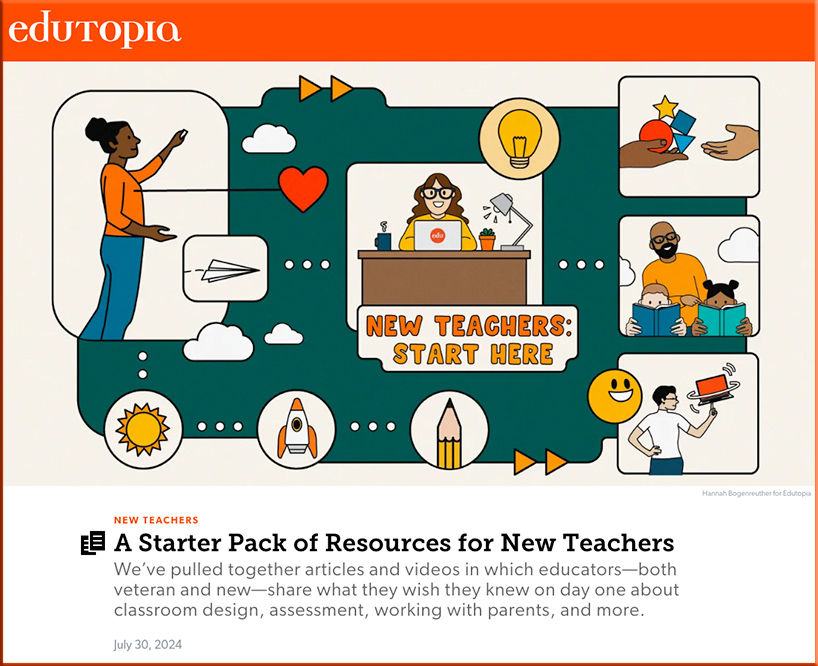For college students—and for higher ed itself—AI is a required course — from forbes.com by Jamie Merisotis
Some of the nation’s biggest tech companies have announced efforts to reskill people to avoid job losses caused by artificial intelligence, even as they work to perfect the technology that could eliminate millions of those jobs.
It’s fair to ask, however: What should college students and prospective students, weighing their choices and possible time and financial expenses, think of this?
The news this spring was encouraging for people seeking to reinvent their careers to grab middle-class jobs and a shot at economic security.
Addressing Special Education Needs With Custom AI Solutions — from teachthought.com
AI can offer many opportunities to create more inclusive and effective learning experiences for students with diverse learning profiles.
For too long, students with learning disabilities have struggled to navigate a traditional education system that often fails to meet their unique needs. But what if technology could help bridge the gap, offering personalized support and unlocking the full potential of every learner?
Artificial intelligence (AI) is emerging as a powerful ally in special education, offering many opportunities to create more inclusive and effective learning experiences for students with diverse learning profiles.
.
11 Summer AI Developments Important to Educators — from stefanbauschard.substack.com by Stefan Bauschard
Equity demands that we help students prepare to thrive in an AI-World
*SearchGPT
*Smaller & on-device (phones, glasses) AI models
*AI TAs
*Access barriers decline, equity barriers grow
*Claude Artifacts and Projects
*Agents, and Agent Teams of a million+
*Humanoid robots & self-driving cars
*AI Curricular integration
*Huge video and video-segmentation gains
*Writing Detectors — The final blow
*AI Unemployment, Student AI anxiety, and forward-thinking approaches
*Alternative assessments
Academic Fracking: When Publishers Sell Scholars Work to AI — from aiedusimplified.substack.com by Lance Eaton
Further discussion of publisher practices selling scholars’ work to AI companies
Last week, I explored AI and academic publishing in response to an article that came out a few weeks ago about a deal Taylor & Francis made to sell their books to Microsoft and one other AI company (unnamed) for a boatload of money.
Since then, two more pieces have been widely shared including this piece from Inside Higher Ed by Kathryn Palmer (and to which I was interviewed and mentioned in) and this piece from Chronicle of Higher Ed by Christa Dutton. Both pieces try to cover the different sides talking to authors, scanning the commentary online, finding some experts to consult and talking to the publishers. It’s one of those things that can feel like really important and also probably only to a very small amount of folks that find themselves thinking about academic publishing, scholarly communication, and generative AI.
At the Crossroads of Innovation: Embracing AI to Foster Deep Learning in the College Classroom — from er.educause.edu by Dan Sarofian-Butin
AI is here to stay. How can we, as educators, accept this change and use it to help our students learn?
The Way Forward
So now what?
In one respect, we already have a partial answer. Over the last thirty years, there has been a dramatic shift from a teaching-centered to a learning-centered education model. High-impact practices, such as service learning, undergraduate research, and living-learning communities, are common and embraced because they help students see the real-world connections of what they are learning and make learning personal.11
Therefore, I believe we must double down on a learning-centered model in the age of AI.
The first step is to fully and enthusiastically embrace AI.
…
The second step is to find the “jagged technological frontier” of using AI in the college classroom.
.
.
.
.
Futures Thinking in Education — from gettingsmart.com by Getting Smart Staff
Key Points
- Educators should leverage these tools to prepare for rapid changes driven by technology, climate, and social dynamics.
- Cultivating empathy for future generations can help educators design more impactful and forward-thinking educational practices.













